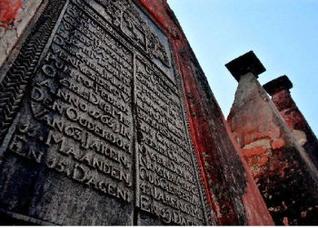Bheemunipatnam still continues to attract tourists, but something has to be done for the upkeep of the ageing structures
Nestled by the bay about 18 km. from Visakhapatnam, this sleepy fishing town was the hub of activity on the eastern coast a few centuries ago. Bheemunipatnam which got its name from the mythological hero Bhima (the second among the five Pandava brothers), has the record of being the second municipal town in India (after Surat) and was once a flourishing Dutch Colony on the east coast. Though its neighbour Visakhapatnam has out beaten it in the course of time to become a sprawling metropolis, Bheemunipatnam continues to bask in its past glories. History points out that when Bheemunipatnam was a flourishing Dutch colony and a major port for import and exports the town of Visakhapatnam was considered to be its subsidiary.

History
The Dutch moved to this coastal town some time in the mid of the 17th century, when the local areas were under the control of the Golconda kings. Initially the Dutch used the port to export rice and later switched to jute. Two jute mills also sprang up in the vicinity of the town in the mid 19th century. One was called as Chittivalsah Jute Mills and the other was known as Nellimarla Jute Mills, both are operational till date.
The town was besieged and ransacked on several occasions. The marauding Marathas ransacked and burnt the town in 1754, it was again destroyed in the Anglo-Dutch wars of 1781 and 1795 and it was finally handed over to the British in 1825 following a treaty in 1824. Subsequently, it became a peaceful Anglo-Dutch settlement.
Remnants of the past
Though many old buildings have been demolished to accommodate newer structures and a few have just withered away with the passage of time for lack of maintenance, a few moss-stained edifices continue to stand firmly to give testimony of the glorious past.
The oldest among such structures is the cemetery at Kummaripalem, a small hamlet on the northwest side of the town. The oldest grave is that of one Frederick Kesslerus and it dates back to 1661. It is the oldest surviving Christian grave in this part of India. The second oldest cemetery is the Flagstaff Cemetery where the tombstones still stand like monuments against the blue waters of the bay. This cemetery has virtually become the landmark of Bheemunipatnam.
Both the cemeteries would have been lost in the annals of time but for the initiative taken by 73-year-old Roberts, a former officer of Chittivalsah Jute Mills. His timely intimation to the London-based British Association for Cemeteries in South Asia (BACSA) saved the day. The association responded in time with some funds for renovation and restoration. Today the cemeteries are under the Government of AP’s Archaeology and Museum Department and have once again become the subject of neglect.
St. Peter’s Church
The church was consecrated on March 17, 1864 by Bishop Gell, in honour of St. Peter.
The design was made with the help of the draughtsman of the 38 Madras Infantry and it was estimated to cost Rs.4,528 with an additional Rs.2,206 for the tower. Gothic in style and architecture, the church has a unique stained glass painting depicting Christ’s baptism and crucifixion just behind the altar. This piece was specially ordered and imported from London for an additional cost of Rs.1,000 in those days. Every aspect was taken care of, right from the arches to the granite altar and from the handsomely carved teak furnishing to the floor.
Gaali Meda
This was another landmark of Bheemunipatnam till a few years ago. This round shaped building was popularly known as the ‘Gali Meda’ (Tower of air). This building was part of the Dutch Governor’s Bungalow, from where a constant vigil was kept on the sea to determine the likely weather, spot approaching ships and to watch for enemy movements. This building also featured in a few hit films like ‘Maro Charitra’ and its Hindi version ‘Ek Dhuje ke liye’. This 24-feet diameter building was demolished a few years ago.
The town still continues to attract many tourists, but something has to be done for the upkeep of the heritage structures. Otherwise they will soon fade away into oblivion.
SUMIT BHATTACHARJEE
source: http://www.thehindu.com / The Hindu / Home> Features> MetroPlus / by Sumit Bhattacharjee / August 18th, 2007